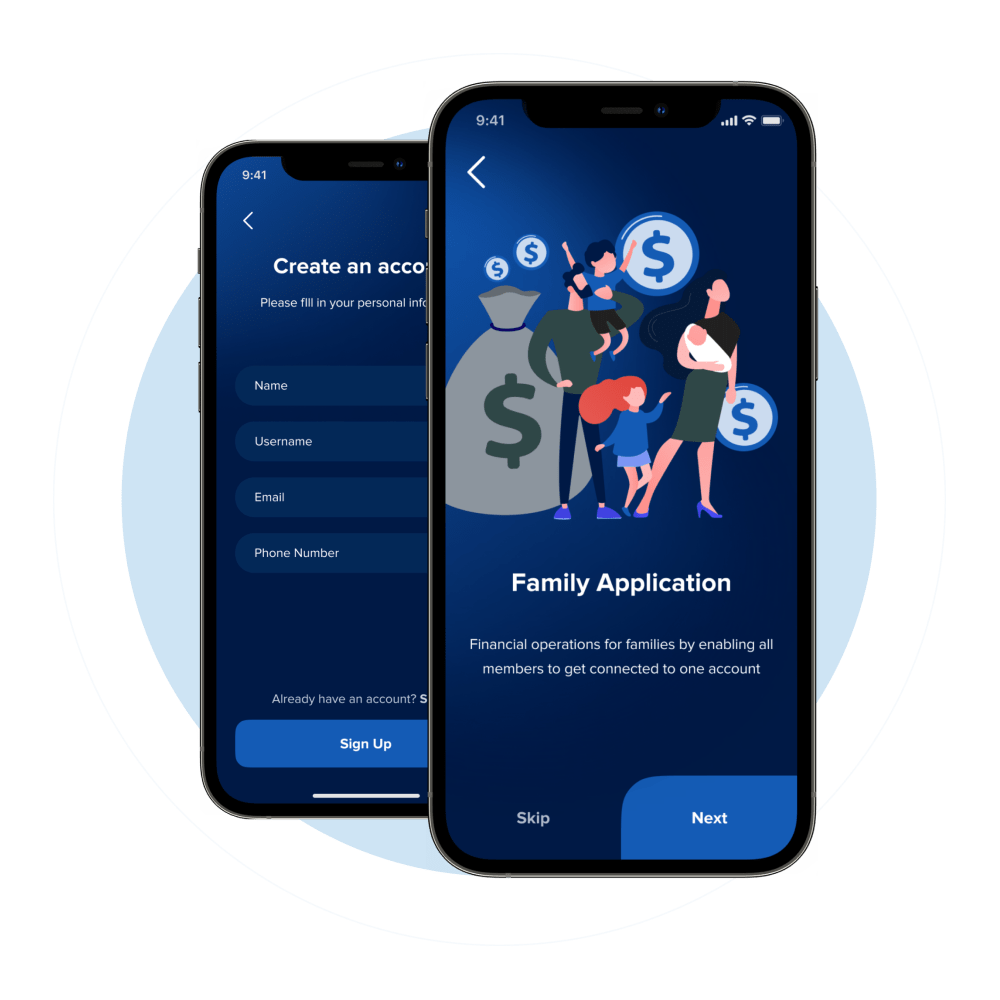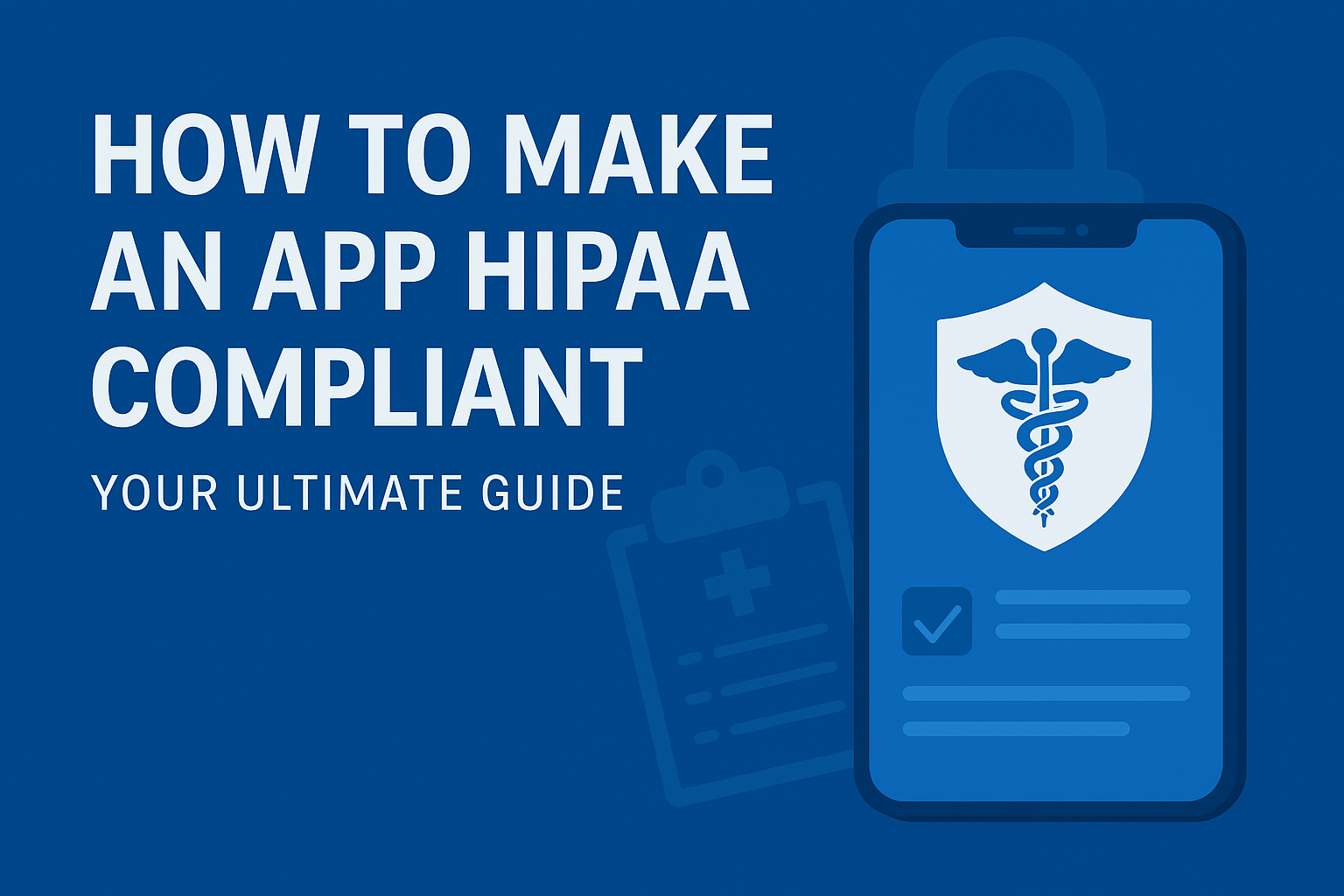
A fintech startup headquartered in Northern Europe approached us to hire mobile developers to reinforce their in-house development team working on an e-wallet for families. After a few interviews with our specialists, the client selected two candidates who were the best fit: a senior iOS developer and a mid-level Android developer. They started working on the client’s project shortly after signing the NDA.
In the middle of the process, the client decided to redesign the application’s interface. He was looking for a skilled designer with hands-on experience in creating interfaces for fintech solutions. At Itexus, we offer turnkey fintech software development, so we have UI/UX specialists on board who have extensive track record in the fintech domain. Thus, we offered the client to review the CVs and portfolios of our designers and they chose one for their project. In this way, three Itexus specialists were added to the client’s internal team – two mobile developers and one UI/UX designer.
The healthcare sector is experiencing a transformative shift driven by digital innovation, with mobile applications emerging as critical tools for elevating patient outcomes, optimizing clinical workflows, and expanding healthcare access. Yet creating these solutions demands more than technical expertise—it carries profound legal and ethical responsibilities. At the core of this challenge lies the imperative to achieve HIPAA compliance, a non-negotiable standard that safeguards sensitive health data while shaping every design, development, and deployment decision.
If you’re venturing into HIPAA Compliant App Development, you’re in the right place. This guide will walk you through the essential requirements, best practices, and technical considerations to ensure your app meets HIPAA compliance standards while delivering healthcare app to users.
What Is HIPAA and Why Does It Matter?
HIPAA is a U.S. law enacted in 1996 to safeguard patient data, prevent fraud, and ensure secure handling of Protected Health Information (PHI). Any app that deals with PHI—whether storing, processing, or transmitting it—must be HIPAA compliant.
What Constitutes PHI?
PHI includes any information that can identify an individual and is linked to health records, such as:
- Patient names and addresses
- Social Security numbers
- Medical records and treatment history
- Billing and insurance details
Failure to comply with HIPAA can result in hefty fines, reputational damage, and legal consequences. This makes HIPAA Compliant App Development a top priority for healthcare software developers.

Does Your App Need to Be HIPAA Compliant?
Before diving into the technicalities, you must determine whether HIPAA compliance applies to your app. Ask yourself:
✔️ Does the app store, process, or transmit PHI?
✔️ Is the app used by healthcare providers, insurance companies, or third-party service providers handling PHI?
✔️ Does it integrate with Electronic Health Records (EHR) systems?
If you answered yes to any of the above, your app must follow HIPAA compliance guidelines.
Core Requirements for HIPAA Compliant App Development
HIPAA compliance is built on four primary rules that developers must adhere to:
1. Privacy Rule
- Ensures PHI is not disclosed without patient consent.
- Patients have the right to access their records.
- Implement strict access controls for sensitive data.
2. Security Rule
- Establishes administrative, physical, and technical safeguards to protect PHI.
- Includes encryption, secure authentication, and access control.
3. Enforcement Rule
- Defines penalties for non-compliance.
- Violations can result in fines ranging from $100 to $1.5 million per year.
4. Breach Notification Rule
- Requires entities to notify affected individuals in case of a data breach.
- Must inform authorities if the breach affects 500+ individuals.
To achieve HIPAA compliance, your app must integrate these security measures at every level of development.
Best Practices for HIPAA Compliant App Development
Now that we understand the rules, let’s look at how to implement them effectively.
1. Secure Data Storage and Transmission
- Encrypt data at rest and in transit using AES-256 or TLS 1.2/1.3.
- Use HIPAA-compliant cloud services like AWS, Microsoft Azure, or Google Cloud with Business Associate Agreements (BAAs).
2. User Authentication and Access Control
- Implement multi-factor authentication (MFA) to prevent unauthorized access.
- Use role-based access control (RBAC) to ensure only authorized personnel access PHI.
3. Automatic Data Backup and Disaster Recovery
- Regularly back up data and store it securely.
- Have a disaster recovery plan to restore data in case of an outage or cyberattack.
4. Secure API Integrations
- Use FHIR (Fast Healthcare Interoperability Resources) and HL7 standards for seamless EHR integration.
- APIs should have strict authentication and access control policies.
5. Regular Security Audits and Risk Assessments
- Conduct penetration testing and vulnerability assessments.
- Log and monitor all system activities to detect unauthorized access.
Technical Aspects of HIPAA Compliant App Development
Building a HIPAA-compliant app requires specific technical implementations. Here’s what you need:
1. Data Encryption Standards
HIPAA mandates strong encryption to protect PHI. Use:
- AES-256 for encrypting stored data.
- TLS 1.3 for secure data transmission.
2. HIPAA-Compliant Cloud Storage
- Opt for AWS, Google Cloud, or Azure HIPAA-compliant services.
- Sign a Business Associate Agreement (BAA) with cloud service providers.
3. Secure User Authentication
- Implement OAuth 2.0 for secure logins.
- Use JWT (JSON Web Token) for authentication tokens.
4. Logging and Auditing
- Maintain detailed logs of access, modifications, and data transfers.
- Use SIEM (Security Information and Event Management) solutions for real-time monitoring.
Challenges in HIPAA Compliant App Development
1. Balancing Security with Usability
- Security measures like MFA and encryption can sometimes hinder user experience.
- Solution: Implement seamless biometric authentication (fingerprint/face ID).
2. Keeping Up with Compliance Updates
- HIPAA regulations evolve, requiring constant updates.
- Solution: Partner with compliance consultants or use automated compliance tools.
3. Ensuring Third-Party Compliance
- Many apps integrate with third-party services (e.g., payment gateways, analytics tools).
- Solution: Work only with vendors that sign a BAA and comply with HIPAA.
HIPAA Compliant App Development Cost & Timeline
Developing a HIPAA-compliant healthcare app involves additional security measures, which impact cost and development time.
| Factor | Cost Estimate | Timeline |
| Basic App Development | $50,000 – $100,000 | 3-6 months |
| Advanced Security Features | $20,000 – $50,000 | 2-4 months |
| Compliance Audits & Testing | $10,000 – $30,000 | 1-2 months |
| Cloud & API Integrations | $30,000 – $70,000 | 3-6 months |
Total Estimated Cost: $100,000 – $250,000
Estimated Development Time: 6-12 months
While the investment is significant, failing to comply can result in million-dollar fines and reputational damage.
Final Thoughts
Building a HIPAA-compliant healthcare app requires a deep understanding of security regulations, encryption methods, and access controls. However, by following the best practices outlined in this guide, you can develop a secure, efficient, and legally compliant healthcare app.
Whether you’re a startup entering the healthcare space or an established company launching a new digital product, prioritizing HIPAA compliance ensures data security, patient trust, and long-term success.
If you’re ready to develop a HIPAA-compliant healthcare app, consult with compliance experts and experienced app developers to ensure every aspect of security is covered.